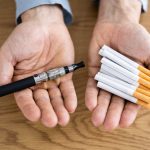
Depression can lower a woman’s chances of surviving breast cancer, a new study reports. Women with breast cancer and depression are more than three times as likely to die as women without either condition, researchers found. By comparison, breast cancer patients who aren’t also suffering from depression are only 45% more likely to die than healthy women. “The combination is what makes the risk of death increase tremendously and leads to thousands of years of life lost,” said lead researcher Jagdish Khubchandani, a professor of public health sciences at New Mexico State University. “We found in our study that the co-occurrence of depression further reduces survival among women with breast cancer,” Khubchandani added in a university news release. “Unfortunately, many women with breast cancer do not get timely or quality care for mental health issues such as depression.” For the study, researchers analyzed data on more than 4,700 women aged 45 and older, about 5% of whom had breast cancer while nearly 13% had depression. They were followed for about eight years. “More than 4 million American women are living with breast cancer today, and more than a quarter-million American women will be diagnosed with breast cancer this year,” Khubchandani said. “Unfortunately, a large proportion of women with breast cancer suffer from depression, poor mental health and lower quality of life.” Results show that certain… read on > read on >











-150x150.jpg)






-150x150.jpeg)





-300x200.jpg)













